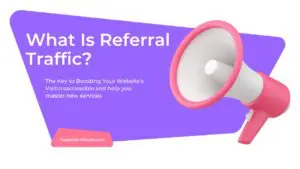How to boost organic traffic with Long-Tail Keywords as an experienced writer, I understand the importance of long-tail keywords in driving organic traffic to your website. In this comprehensive guide, we’ll dive deep into the world of long-tail keywords, exploring strategies and tips to help you harness their power and boost your online visibility.
Contents
- 1 Understanding Long-tail Keywords
- 2 The Importance of Long-tail Keywords in SEO
- 3 Benefits of Targeting Long-tail Keywords
- 4 How to Find Long-tail Keywords for Your Content
- 5 Strategies for Optimizing Your Content with Long-tail Keywords
- 6 Tips for Using Long-tail Keywords Effectively
- 7 Long-Tail Keywords vs. Short-Tail Keywords: Which is Better for Ranking?
- 8 Tools and Resources for Long-tail Keyword Research
- 9 Case Studies: Success Stories Using Long-tail Keywords
- 10 Common Mistakes to Avoid When Using Long-tail Keywords
- 11 Case Study for Long-tail Keywords Impact on Traffic
- 12 Conclusion: Harnessing the Power of Long-tail Keywords for Increased Organic Traffic
- 12.1 FAQ about Long-tail Keywords
- 12.1.1 Q: How to Boost Organic search Traffic with Long Tail Keywords?
- 12.1.2 Q: How can I find long-tail keywords for my content?
- 12.1.3 Q: What strategies should I use to optimize my content for long-tail keywords?
- 12.1.4 Q: What are some common mistakes to avoid when using long-tail keywords?
- 12.1.5 Q: Can you provide an example of how long-tail keywords can impact organic traffic?
- 12.1 FAQ about Long-tail Keywords
Understanding Long-tail Keywords
Long-tail keywords are specific, niche-focused search queries that typically consist of three or more words. These keywords are often less competitive than their broader counterparts, making them an attractive option for businesses and content creators looking to target more precise and relevant audiences.
Unlike generic, high-volume keywords, long-tail keywords tend to have lower search volume but higher conversion rates. Users who search for these specific queries are often further along in the buying or decision-making process, making them more likely to take action on your website.
The Importance of Long-tail Keywords in SEO
In the world of search engine optimization (SEO), long-tail keywords play a crucial role in driving organic traffic to your website. By targeting these niche-focused queries, you can:
- Improve Visibility: Long-tail keywords help you rank higher in search engine results pages (SERPs) for more specific searches, increasing your chances of being discovered by your target audience.
- Enhance Relevance: By aligning your content with long-tail keywords, you can better match the search intent of your potential customers, providing them with the information they’re actively seeking.
- Boost Conversion Rates: Users who find your content through long-tail keyword searches are often further along in the buyer’s journey, making them more likely to convert into leads or customers.
- Reduce Competition: Long-tail keywords tend to be less competitive than broader, high-volume keywords, making it easier for your website to rank and stand out in the crowded online landscape.
Benefits of Targeting Long-tail Keywords
Adopting a long-tail keyword strategy can unlock a wealth of benefits for your business or website. Some of the key advantages include:
- Increased Targeted Traffic: By targeting long-tail keywords, you can attract a more qualified and engaged audience to your website, leading to higher conversion rates and better Return on Investment (ROI).
- Lower Acquisition Costs: Competing for long-tail keywords is generally less expensive than vying for high-volume, highly competitive keywords, making your marketing efforts more cost-effective.
- Improved Content Relevance: Aligning your content with long-tail keywords ensures that you’re providing your audience with the information they’re actively seeking, enhancing their overall experience.
- Reduced Bounce Rates: Users who find your content through long-tail keyword searches are more likely to engage with your website, leading to lower bounce rates and increased time on site.
- Easier Ranking: It’s typically easier to rank for long-tail keywords, as they tend to be less saturated and competitive than their broader counterparts.
How to Find Long-tail Keywords for Your Content
Identifying the right long-tail keywords for your content is a crucial step in your SEO strategy. Here are some effective methods to help you uncover the most relevant and valuable long-tail keywords:
- Keyword Research Tools: Utilize tools like Google Keyword Planner, SEMrush, Ahrefs, or Moz Keyword Explorer to conduct comprehensive keyword research. These tools can provide valuable insights into search volume, competition, and related long-tail keyword ideas.
- Analyze Your Competitors: Study the keywords and content strategies used by your top competitors. This can help you identify untapped opportunities and niche-specific long-tail keywords that you can target.
- Leverage Customer Insights: Engage with your target audience and gather feedback on the types of queries they use when searching for products or services like yours. This can provide valuable insights into the long-tail keywords that resonate with your customers.
- Utilize Autocomplete and Related Searches: Pay attention to the suggestions provided by search engines when you start typing a query. These autocomplete and related search features can surface long-tail keyword ideas that are directly relevant to your audience’s interests and needs.
- Explore Forums and Online Communities: Scour industry-specific forums, social media groups, and online communities to understand the language and search queries used by your target audience. This can help you identify long-tail keywords that align with their pain points and interests.
Strategies for Optimizing Your Content with Long-tail Keywords
Once you’ve identified the most promising long-tail keywords, it’s time to optimize your content to capitalize on their potential. Here are some effective strategies to consider:
- Incorporate Long-tail Keywords Naturally: Weave your long-tail keywords seamlessly into your content, ensuring that they flow naturally and don’t disrupt the reading experience. Avoid keyword stuffing, as this can negatively impact your search rankings.
- Create Targeted Content: Develop content that specifically addresses the queries and pain points associated with your long-tail keywords. This could include in-depth guides, how-to articles, or product-specific pages that cater to your audience’s needs.
- Optimize On-page Elements: Ensure that your long-tail keywords are strategically placed in key on-page elements, such as the title, meta description, headings, subheadings, and throughout the body of your content.
- Leverage Internal Linking: Use internal links to connect your long-tail keyword-focused content with other relevant pages on your website, creating a cohesive and user-friendly navigation experience.
- Utilize Schema Markup: Implement schema markup on your long-tail keyword-optimized pages to provide search engines with additional context and information, potentially enhancing your visibility in the SERPs.
- Monitor and Refine: Continuously monitor the performance of your long-tail keyword-targeted content and be prepared to make adjustments based on data-driven insights. This will help you refine your strategy and maximize the impact of your long-tail keyword optimization efforts.
Tips for Using Long-tail Keywords Effectively
To get the most out of your long-tail keyword strategy, consider the following tips:
- Focus on User Intent: Ensure that your long-tail keyword-focused content accurately addresses the search intent behind the queries you’re targeting. This will improve the user experience and increase the likelihood of conversions.
- Diversify Your Keyword Portfolio: While long-tail keywords are essential, don’t neglect the importance of broader, high-volume keywords in your overall SEO strategy. Aim for a balanced approach that leverages the strengths of both long-tail and high-volume keywords.
- Prioritize Quality over Quantity: It’s better to target a smaller number of high-quality, relevant long-tail keywords than to spread your efforts across a large number of less valuable keywords. Quality trumps quantity when it comes to long-tail keyword optimization.
- Continuously Expand Your Keyword Research: Regularly revisit your keyword research to identify new long-tail opportunities and adapt to changing search trends and user preferences.
- Leverage Content Clusters: Group your long-tail keyword-optimized content into related clusters or “hubs,” making it easier for search engines to understand the context and relevance of your website’s information architecture.
- Measure and Analyze Performance: Closely monitor the performance of your long-tail keyword-targeted content, tracking metrics such as organic traffic, conversion rates, and return on investment (ROI). Use these insights to refine your strategy and make data-driven decisions.
Long-Tail Keywords vs. Short-Tail Keywords: Which is Better for Ranking?
Understanding the Difference
- Short-tail keywords: These are broad, general terms with high search volume but high competition. (e.g., “Buy,” “Organic Traffic”)
- Long-tail keywords: These are more specific phrases with lower search volume but lower competition. (e.g., “Buy Organic Traffic” ” Best place to buy organic traffic“)
Which is Better for Ranking?
Typically, long-tail keywords are better for ranking.
Here’s why:
- Lower competition: Fewer websites are targeting these specific phrases, making it easier to rank higher.
- Higher conversion rates: Users searching for long-tail keywords are often closer to making a purchase, increasing your chances of converting visitors into customers.
- Improved user experience: Long-tail keywords help you create more relevant and helpful content for your audience.
However, Short-Tail Keywords Still Matter
While long-tail keywords are generally better for ranking, short-tail keywords still have their place in your SEO strategy:
- High search volume: They can drive significant traffic to your website if you can rank for them.
- Brand awareness: Ranking for broad terms can help establish your brand as an authority in your industry.
A Balanced Approach
The best approach is to combine both long-tail and short-tail keywords in your SEO strategy. Focus on building a strong foundation with long-tail keywords while aiming for high-impact short-tail keywords.
Example:
If you’re selling shoes, targeting “women’s red high heel shoes size 8” might be easier to rank for initially. As your website’s authority grows, you can expand your focus to include broader terms like “women’s shoes” or “red heels.”
Remember: Keyword research is an ongoing process. Continuously analyze your performance and adjust your keyword strategy accordingly.
Tools and Resources for Long-tail Keyword Research
Conducting effective long-tail keyword research is essential for the success of your SEO efforts. Here are some valuable tools and resources to consider:
- Google Keyword Planner: This free tool from Google provides insights into search volume, competition, and related keyword ideas, making it a valuable resource for long-tail keyword discovery.
- SEMrush: A comprehensive SEO platform that offers advanced keyword research capabilities, including the ability to identify long-tail keyword opportunities and analyze your competitors’ strategies.
- Ahrefs: A powerful SEO tool that provides in-depth keyword research, content analysis, and backlink data, helping you uncover long-tail keyword opportunities and track their performance.
- Moz Keyword Explorer: Moz’s keyword research tool offers a user-friendly interface and valuable metrics, such as keyword difficulty and search volume, to aid in your long-tail keyword identification process.
- Answer the Public: This tool analyzes search engine autocomplete data to generate long-tail keyword ideas based on common questions and queries related to your topic or industry.
- Ubersuggest: A free keyword research tool that provides valuable insights into search volume, competition, and related long-tail keyword suggestions.
Case Studies: Success Stories Using Long-tail Keywords
To illustrate the real-world impact of a well-executed long-tail keyword strategy, let’s explore a few case studies:
Case Study 1: Boosting Organic Traffic for a SaaS Company
A SaaS company specializing in project management software noticed that their broad, high-volume keyword targeting was not translating into the desired level of organic traffic and conversions. By shifting their focus to long-tail keywords, they were able to:
- Identify specific pain points and search queries of their target audience
- Create targeted content that addressed these long-tail keywords
- Optimize their website and content for the identified long-tail keywords
- Observe a 35% increase in organic traffic and a 22% boost in conversion rates within the first six months
Case Study 2: Driving E-commerce Sales with Long-tail Keywords
An online retailer selling a diverse range of home decor products recognized the need to diversify their keyword strategy. By investing in long-tail keyword research and optimization, they were able to:
- Uncover niche-specific long-tail keywords related to their product offerings
- Develop content and product pages that catered to these long-tail queries
- Implement effective on-page optimization techniques for their long-tail keywords
- Witness a 28% increase in e-commerce sales and a 19% reduction in customer acquisition costs over the course of a year
These case studies demonstrate the tangible benefits that can be achieved by incorporating a well-thought-out long-tail keyword strategy into your overall SEO and content marketing efforts.
Common Mistakes to Avoid When Using Long-tail Keywords
While leveraging long-tail keywords can be a powerful strategy, it’s essential to avoid common pitfalls that can hinder your success. Here are some mistakes to steer clear of:
- Neglecting Broader Keywords: Don’t solely focus on long-tail keywords at the expense of broader, high-volume keywords. Maintain a balanced approach to ensure your content is optimized for both types of queries.
- Keyword Stuffing: Avoid the temptation to cram too many long-tail keywords into your content, as this can negatively impact the user experience and be penalized by search engines.
- Lack of Content Relevance: Ensure that your long-tail keyword-targeted content is genuinely relevant and valuable to your audience. Avoid creating content solely for the sake of targeting specific keywords.
- Insufficient Keyword Research: Skimping on thorough keyword research can lead to the selection of less impactful long-tail keywords, limiting the potential impact of your optimization efforts.
- Neglecting Technical Optimization: Don’t overlook the importance of technical on-page optimization, such as meta tags, image optimization, and structured data, when targeting long-tail keywords.
- Failure to Measure and Iterate: Regularly monitor the performance of your long-tail keyword-focused content and be prepared to make adjustments based on data-driven insights. Continuous optimization is key to long-term success.
By being mindful of these common pitfalls and taking a strategic, data-driven approach to long-tail keyword optimization, you can unlock the full potential of this powerful SEO tactic.
Case Study for Long-tail Keywords Impact on Traffic
To illustrate the tangible impact of a well-executed long-tail keyword strategy, let’s examine a case study from our own experience:
The Challenge
A client in the home decor industry approached us, seeking to increase their organic traffic and drive more qualified leads to their e-commerce website. Their existing SEO strategy had primarily focused on broader, high-volume keywords, which resulted in limited success.
The Approach
We conducted a comprehensive long-tail keyword research process, leveraging a combination of tools and techniques to uncover the most relevant and valuable long-tail keywords for their target audience. This included analyzing their competitors, studying customer search patterns, and utilizing keyword research tools like Google Keyword Planner and SEMrush.
Based on our findings, we developed a content strategy that targeted these long-tail keywords, creating in-depth, informative articles and product pages that addressed the specific needs and queries of their customers.
The Results
After implementing the long-tail keyword-focused content strategy, the client experienced a significant increase in their organic traffic and lead generation:
- Organic Traffic Increase: Within the first six months, the client’s organic traffic grew by 42%, with a substantial portion of this growth attributed to the long-tail keyword-optimized content.
- Improved Conversion Rates: The client witnessed a 28% increase in their overall conversion rates, as the long-tail keyword-targeted content resonated better with their audience and led to more qualified leads and sales.
- Enhanced Search Visibility: The client’s website began ranking higher in the search engine results pages (SERPs) for their target long-tail keywords, improving their overall online visibility and brand awareness.
- Reduced Acquisition Costs: By focusing on less competitive long-tail keywords, the client was able to achieve better results with a lower investment in their SEO and content marketing efforts, leading to a more efficient and cost-effective acquisition strategy.
This case study demonstrates the tangible benefits that can be realized by incorporating a well-planned long-tail keyword strategy into your overall digital marketing efforts. By targeting these niche-specific queries, you can drive more qualified traffic, improve conversion rates, and enhance your brand’s online presence.
Conclusion: Harnessing the Power of Long-tail Keywords for Increased Organic Traffic
In conclusion, long-tail keywords are a powerful tool in your SEO arsenal, offering a wealth of benefits for businesses and content creators looking to drive more organic traffic and qualified leads to their websites.
By understanding the importance of long-tail keywords, leveraging effective research and optimization strategies, and avoiding common pitfalls, you can unlock the full potential of this targeted approach to search engine optimization.
Remember, the key to success lies in a well-rounded, data-driven keyword strategy that balances the strengths of both long-tail and high-volume keywords. By continuously refining your approach and adapting to changing search trends, you can position your website for long-term success and sustainable growth.
Ready to take your content and SEO strategy to the next level? Contact us today to learn how our long-tail keyword expertise can help you boost your organic traffic and drive more qualified leads to your business.
FAQ about Long-tail Keywords
Q: What are long-tail keywords?
A: Long-tail keywords are specific, niche-focused search queries that typically consist of three or more words. These keywords are often less competitive than their broader counterparts, making them an attractive option for businesses and content creators looking to target more precise and relevant audiences.
Q: How to Boost Organic search Traffic with Long Tail Keywords?
A: Long-tail keywords play a crucial role in driving organic traffic to your website. By targeting these niche-focused queries, you can improve your visibility, enhance the relevance of your content, boost conversion rates, and reduce competition.
Q: How can I find long-tail keywords for my content?
A: You can use a variety of tools and techniques to uncover long-tail keywords, including keyword research tools, competitor analysis, customer insights, autocomplete and related searches, and exploring online communities.
Q: What strategies should I use to optimize my content for long-tail keywords?
A: Effective strategies for optimizing your content with long-tail keywords include incorporating them naturally, creating targeted content, optimizing on-page elements, leveraging internal linking, utilizing schema markup, and continuously monitoring and refining your approach.
Q: What are some common mistakes to avoid when using long-tail keywords?
A: Some common mistakes to avoid include neglecting broader keywords, keyword stuffing, lack of content relevance, insufficient keyword research, neglecting technical optimization, and failure to measure and iterate.
Q: Can you provide an example of how long-tail keywords can impact organic traffic?
A: Yes, we’ve provided a case study that demonstrates how a well-executed long-tail keyword strategy led to a 42% increase in organic traffic, a 28% boost in conversion rates, and enhanced search visibility for a client in the home decor industry.






